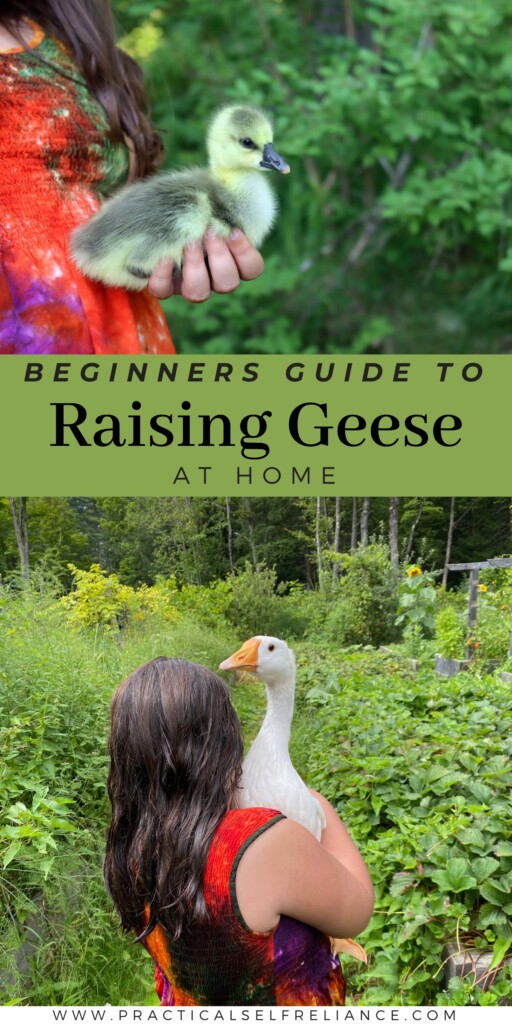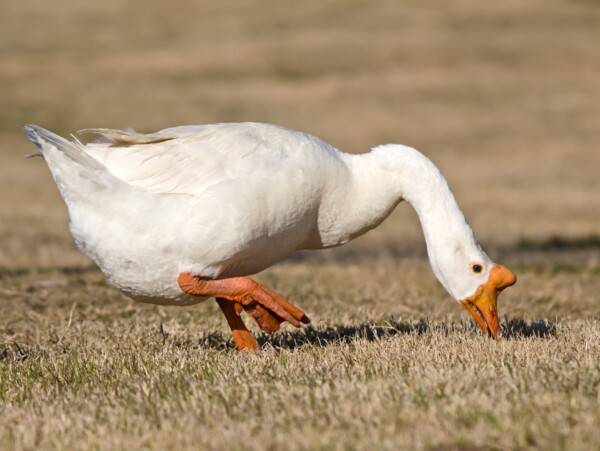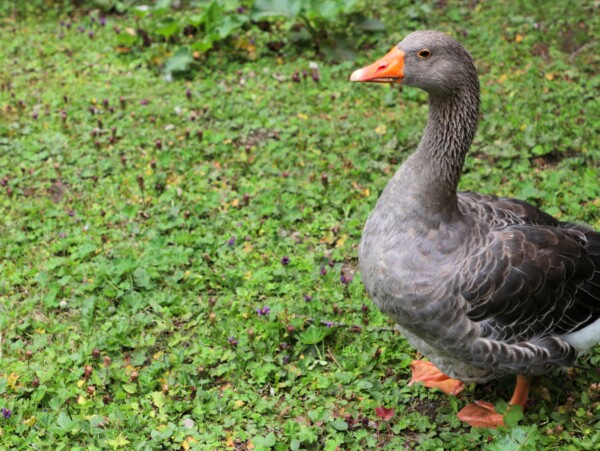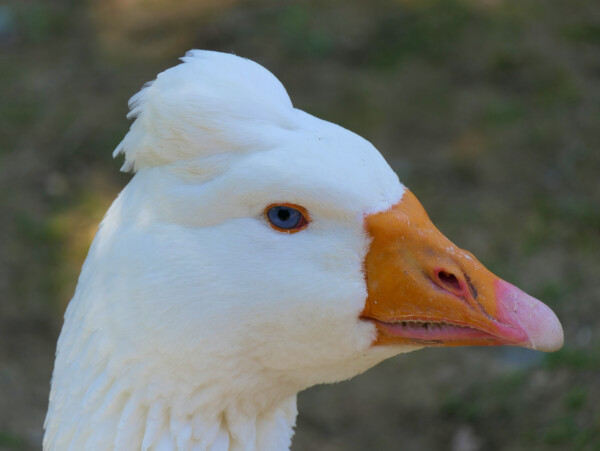Affiliate disclosure: This post may contain affiliate links. Please see our Privacy Policy.
Geese are incredibly rewarding animals that can bring personality, utility, and a touch of wild charm to your backyard. With a bit of space, secure housing, fresh grass, and a tub of clean water, they’ll thrive with minimal effort—and repay you with eggs, goslings, or simply companionship.
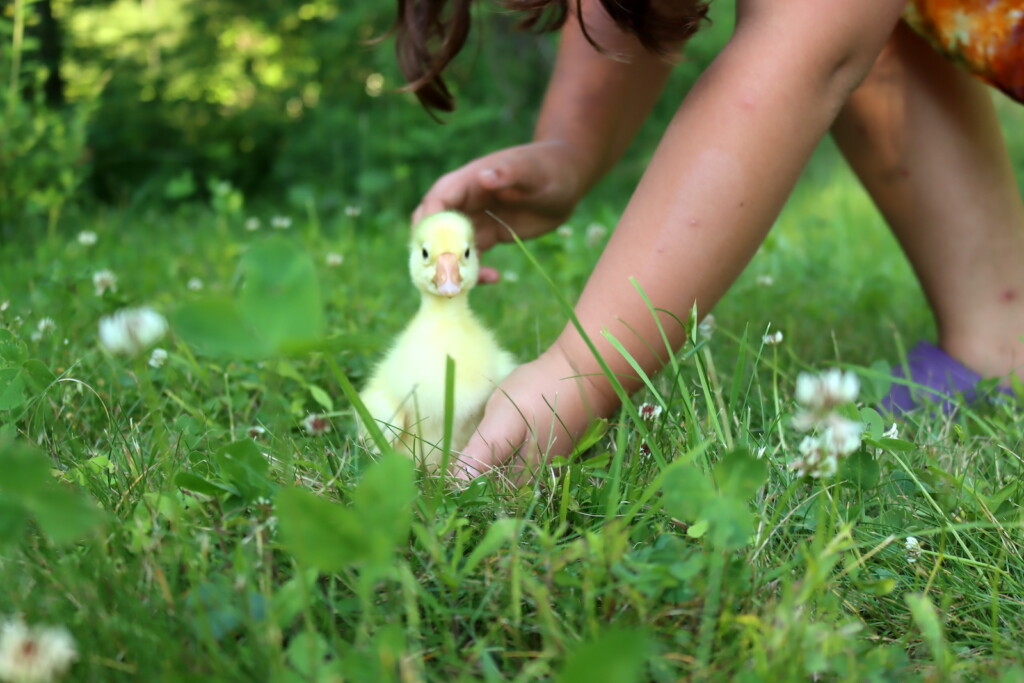
Though often overlooked in favor of chickens or ducks, geese bring their own unique benefits to the backyard: they’re hardy, low-maintenance grazers that thrive on fresh pasture, contribute rich seasonal eggs, and provide flavorful meat if you choose to harvest.
Beyond their utility, geese are deeply social, expressive animals with strong personalities—sometimes aloof, sometimes affectionate, and often comically curious. Whether you’re keeping them for eggs, companionship, or pasture management, they quickly become part of the daily rhythm of life on the land.
Raising geese doesn’t require high infrastructure or constant intervention. In fact, once they’re past the brooder stage, geese are some of the easiest poultry to manage!
They’re more cold-hardy than chickens, cleaner than ducks, and their grazing instincts can dramatically cut down on feed costs in the growing season. With access to shelter, clean water, and a bit of grass, geese largely take care of themselves. They also excel in mixed-species flocks—many homesteaders run them alongside chickens or ducks with little trouble.

That said, geese aren’t right for everyone. They require more space than chickens, and some breeds are vocal or territorial during the spring breeding season. Their intelligence and flock loyalty make them rewarding to work with, but they also need consistent routines, secure nighttime shelter, and thoughtful management during their early growth stages. If you’re used to raising chickens, the differences in behavior, diet, and housing needs are worth learning before you dive in.
In this beginner’s guide, I’ll walk you through everything you need to know to get started—from choosing the right breed to brooding goslings, feeding adults, protecting your flock from predators, and understanding how geese behave throughout the seasons. Whether you’re raising a pair for companionship or a small flock for eggs and meat, domestic geese can be a valuable and deeply enjoyable part of your homestead life.
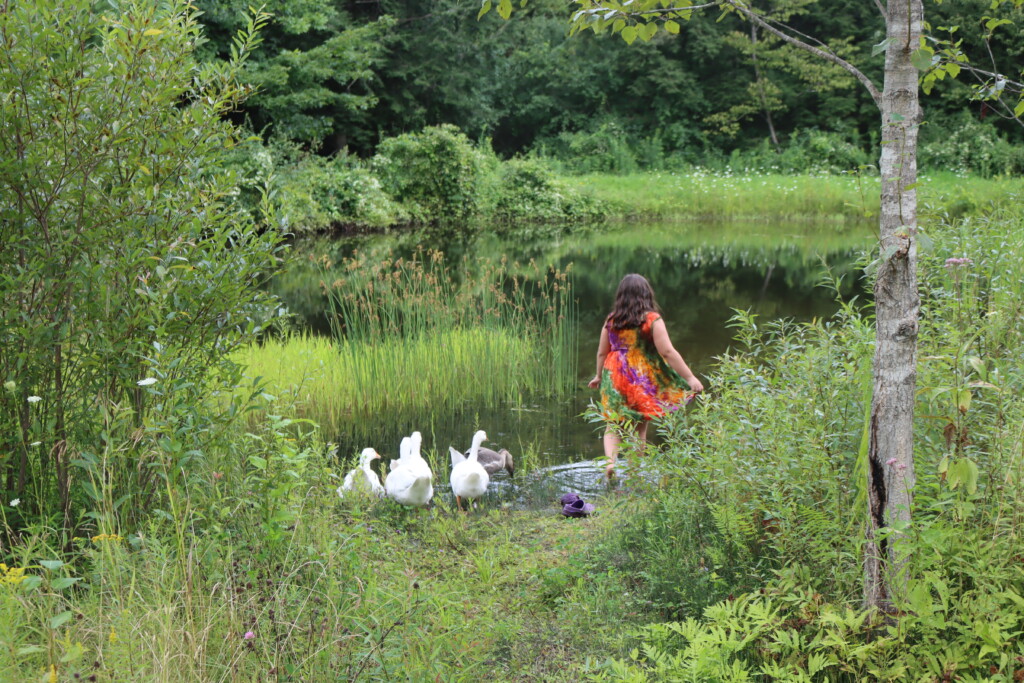
Breeds and Personality
Not all geese are created equal. Some breeds are calm and quiet (Pilgrim, American Buff, Roman), while others are louder or more territorial (Chinese, African). Some are better at brooding and raising young, while others are bred more for meat or ornamental traits.
Choose your breed based on your goals—whether that’s weed control, meat, eggs, companionship, or show birds. Start with 2–4 geese to get a feel for what works best for your space.
If you’re just getting started with geese, you’ll likely encounter a handful of breeds that are widely available through hatcheries and breeders across the U.S. Each has its own strengths when it comes to temperament, size, appearance, and purpose.
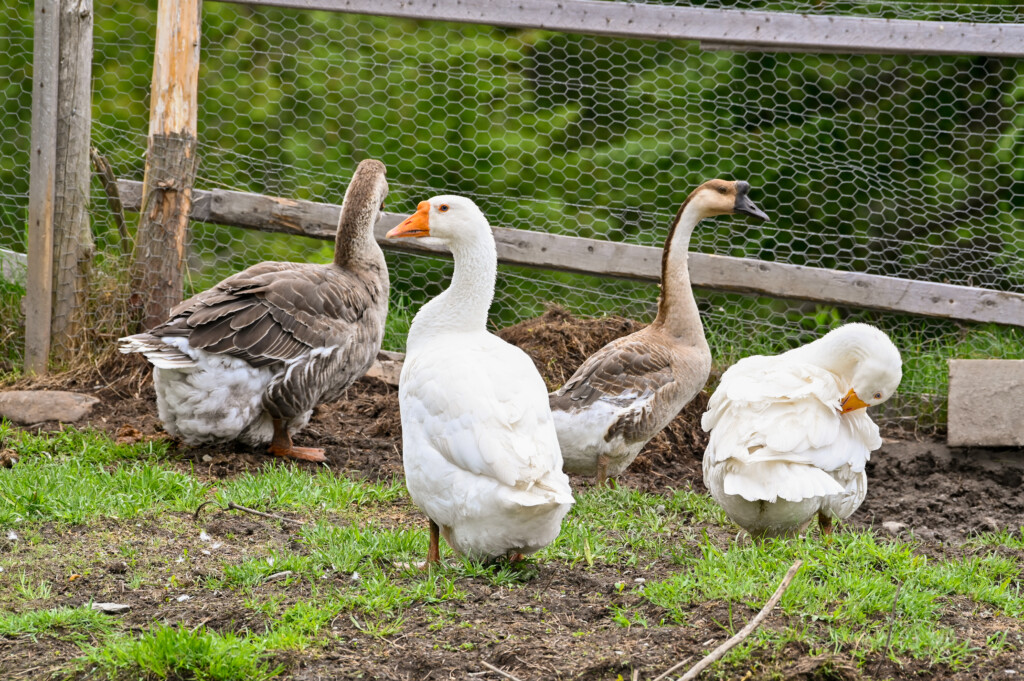
Here’s a quick look at the most commonly kept goose breeds:
African – These heavy-bodied geese are striking and impressive, with a prominent basal knob and deep, resonant voices. Despite their size, they’re relatively calm and make excellent flock guardians. African geese are often raised for meat, but they’re also popular as ornamental or protective birds.
American Buff – Known for their gentle disposition and beautiful buff-colored plumage, American Buffs are a dual-purpose breed often chosen for families or smaller homesteads. They’re good layers, solid foragers, and easy to manage, with a friendly personality that makes them one of the best breeds for beginners.
Chinese – Sleek, upright, and highly vocal, Chinese geese are one of the most alert and energetic breeds available. They come in white and brown varieties, both with long necks and a prominent basal knob above the beak. While their constant honking makes them excellent watchdogs, it also means they’re best suited for rural areas where noise isn’t a concern. They’re prolific layers—often outlaying all other goose breeds—and efficient foragers that do well on pasture.
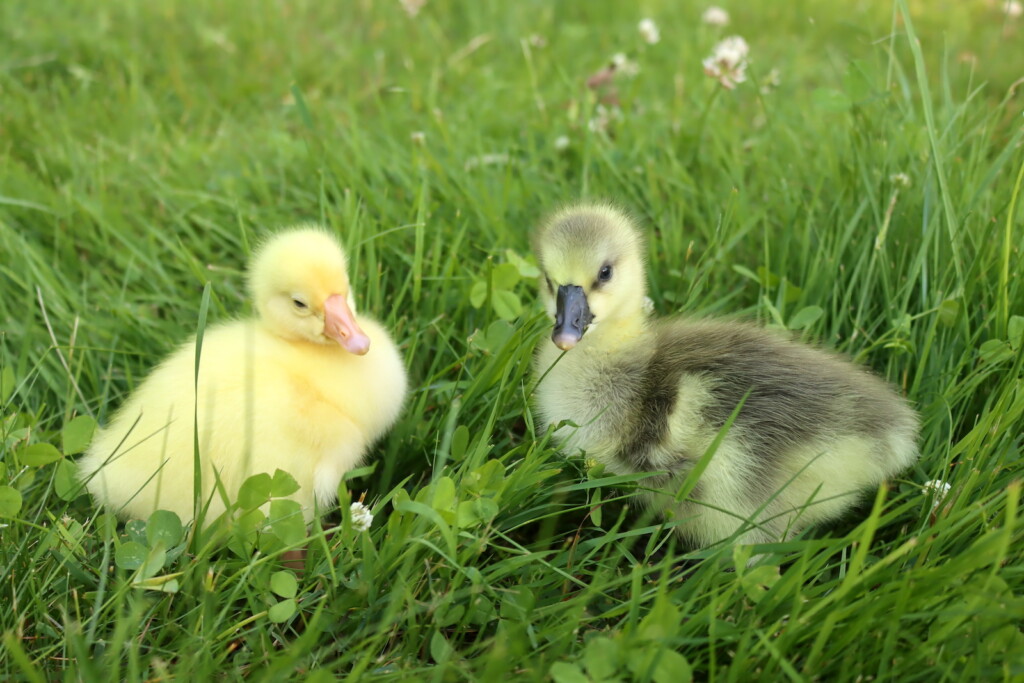
Embden – The Embden is the go-to breed for meat production. These all-white geese are fast-growing, massive (often over 20 pounds), and relatively quiet for their size. Though not particularly affectionate, they’re efficient grazers and very cold-hardy, making them ideal for pasture-based systems.
Pilgrim – Pilgrim geese are medium-sized, calm, and auto-sexing (males are white, females are gray), which makes them a favorite among small-scale breeders. They’re excellent natural parents, moderate layers, and known for their gentle behavior with people and other animals.
Roman (including Tufted Roman) – Romans are one of the oldest domestic goose breeds and are among the smallest standard-sized geese. Tufted Romans, with their unique crest of feathers, are particularly popular as ornamental birds. They’re quiet, compact, and ideal for urban or backyard setups.
Sebastopol – With long, curly feathers that flow like ribbons, Sebastopols are the showstoppers of the goose world. They’re primarily ornamental but also make friendly, manageable pets. Though not strong flyers or foragers, they thrive in clean, dry environments and are great additions to a decorative or companion flock.
Toulouse – These gentle giants are valued for their meat and calm temperament. There are two types: the Production Toulouse, which is more active and pasture-suited, and the Dewlap Toulouse, which is slower and heavier, bred primarily for foie gras. Either type is quiet, cold-hardy, and easy to manage in a small farm setting.
Beyond this short list of common breeds available in the US, I also have a more comprehensive list of goose breeds, including heritage breeds from around the world. Sometimes you can find the specialty breeds if you know to ask for them.
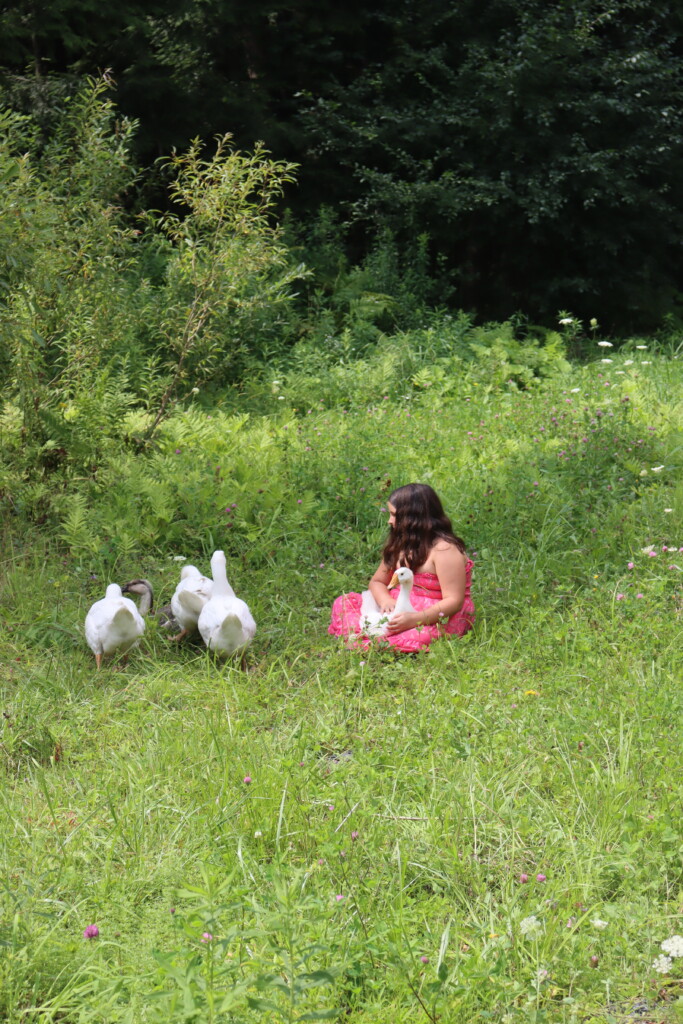
Raising Goslings
If you’re starting your flock with goslings, be prepared for rapid growth and big personalities from day one.
Goslings grow at an astonishing rate—by 3 to 4 weeks of age, they’re often already half their adult size and starting to outpace most other poultry in both feed consumption and curiosity.
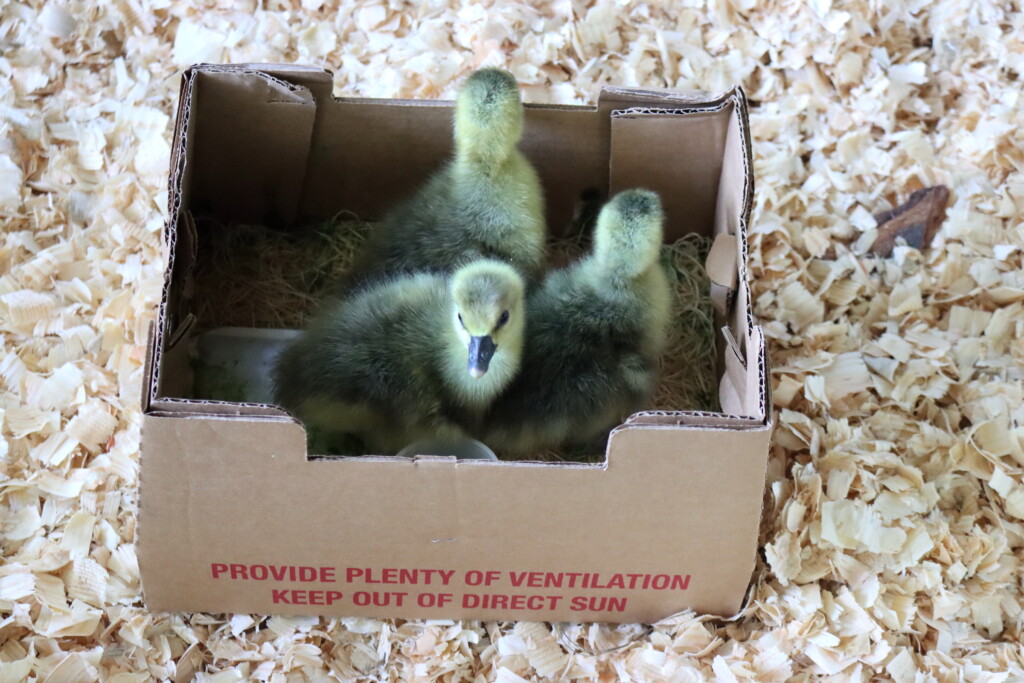
To accommodate their growth, you’ll need a spacious, draft-free brooder with ample bedding and room to move away from the heat source. Unlike chicks, goslings don’t huddle as closely for warmth and will overheat if they can’t regulate their temperature.
A good rule of thumb is to provide 1 square foot per gosling for the first week, increasing as they grow. Use pine shavings or straw (avoid slippery surfaces like newspaper), and change bedding frequently to keep their environment dry and clean.
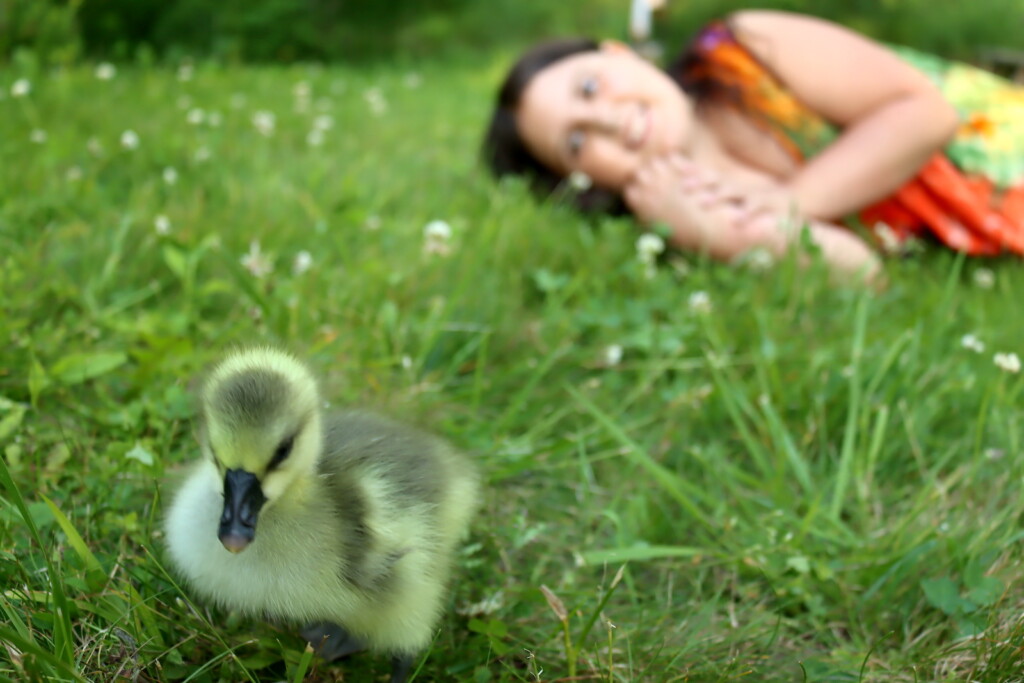
Young goslings need a high-niacin diet to support leg and joint development. Standard chick starter often doesn’t have enough niacin, so it’s best to use waterfowl starter feed if you can find it.
If not, supplement chick starter with brewer’s yeast (about 1 tablespoon per cup of feed) to boost their niacin intake. Without sufficient niacin, goslings can develop leg problems such as slipped tendons or splayed legs.
It’s also nice if you can give them some greens to get their digestive system going. Geese are grazers at heart, and corn isn’t exactly their natural diet, so we start trays of homegrown microgreens for them every week. They’ll eat a whole tray in about an hour!
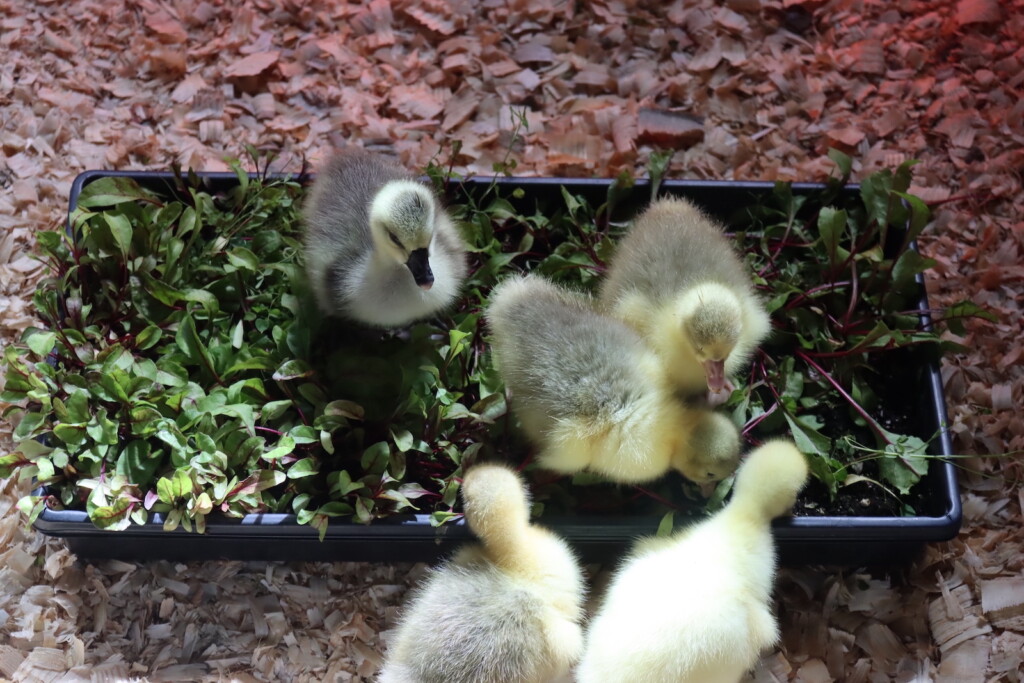
Fresh water is absolutely essential, not just for drinking but for helping them eat safely. Goslings use water to help swallow feed and rinse their nares and eyes.
Always provide water in a container deep enough for them to dunk their heads but shallow enough to prevent drowning. A plastic chick waterer base set in a pan or tray works well for the first few weeks, and a small bowl with marbles or stones can keep young birds safe from accidental falls.
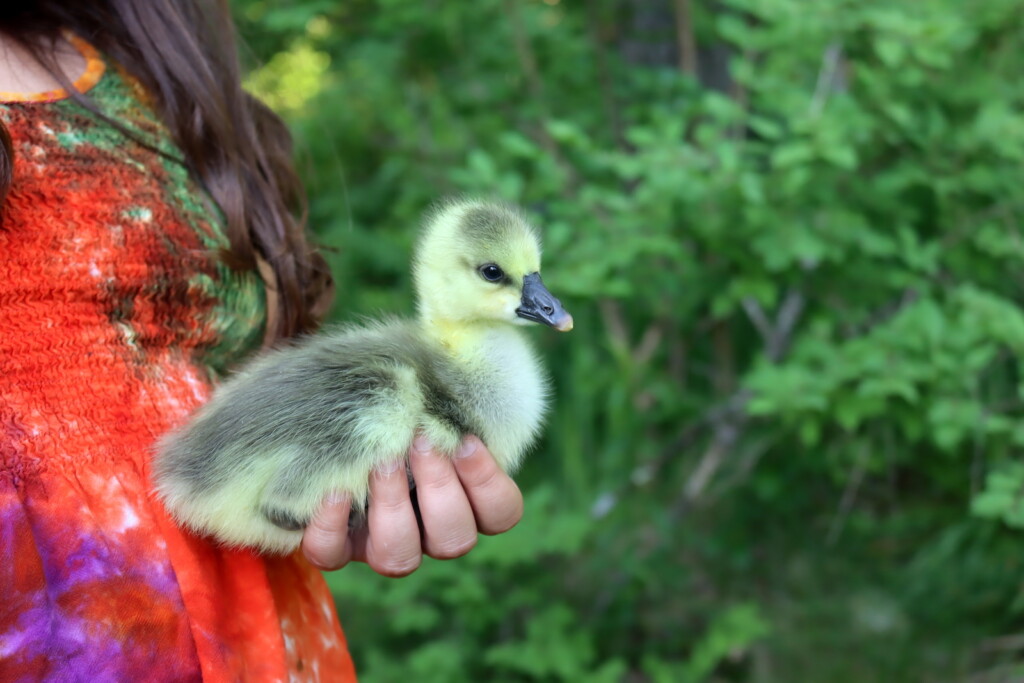
We like to take our goslings for short swims in our stock tank pool, but they require constant monitoring when swimming at a young age. Their feathers aren’t waterproof yet, and lacking a mother goose, you need to be there to tell them when it’s time to get out.
We give them a little floating platform, our goose boat, so that they can take breaks.
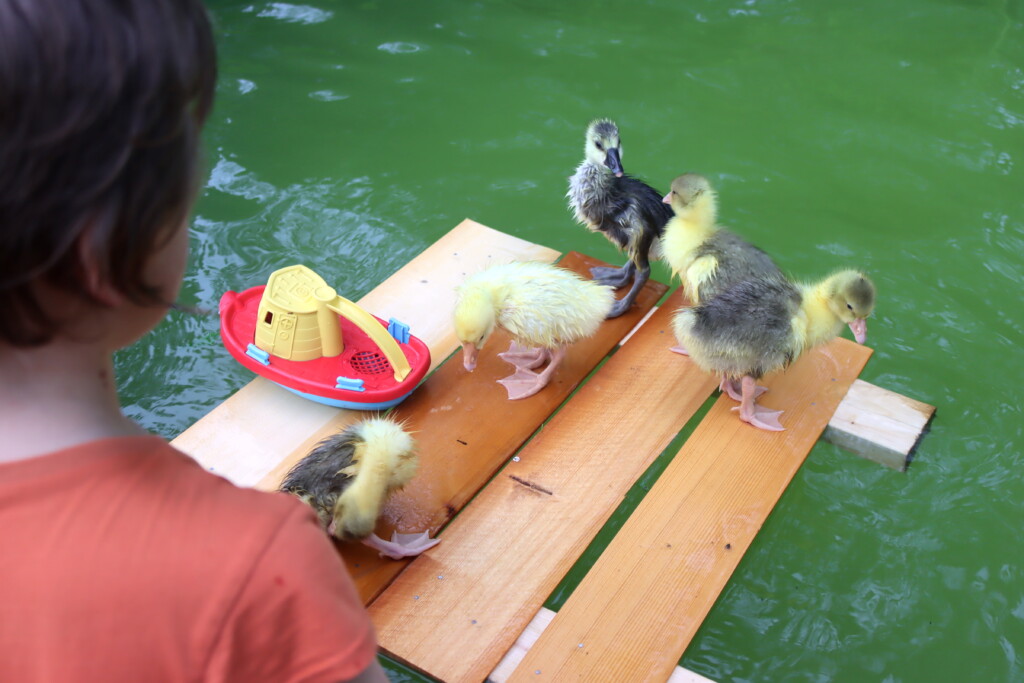
By 2 to 3 weeks of age, goslings can enjoy supervised time outdoors on warm days. Just be sure to bring them in at night and during cold, windy, or wet weather.
Once they’re fully feathered—usually around 8 to 10 weeks—they can transition to full-time outdoor living, provided they have access to shelter and protection from predators.
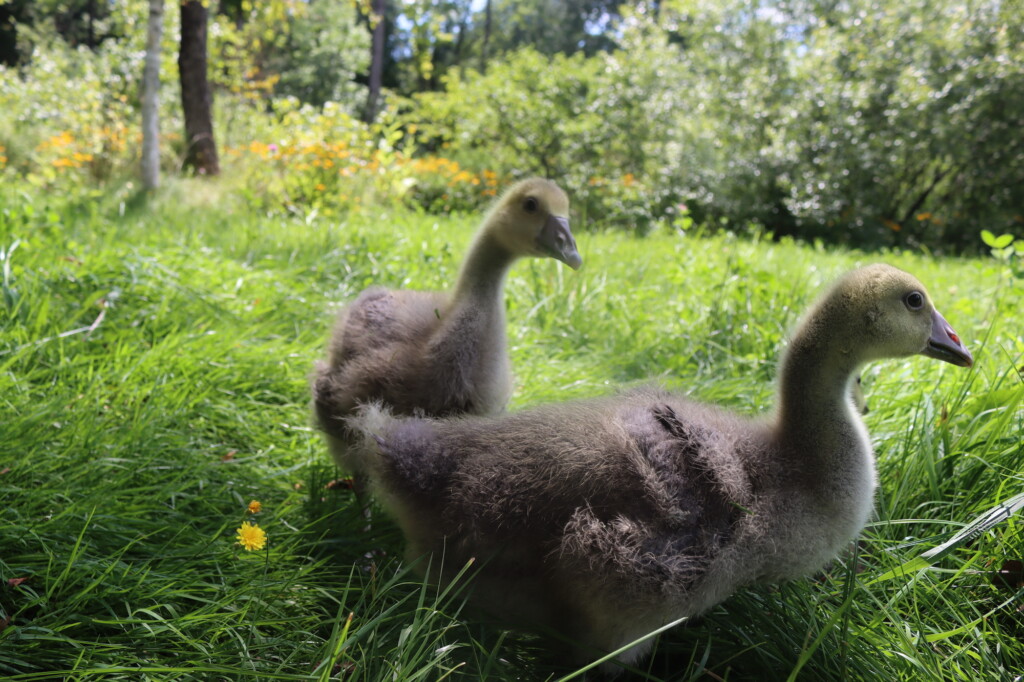
Goslings are highly social and will cry loudly if kept alone, so plan to raise at least two together, or raise them with ducklings or chicks for company. They bond strongly with their flockmates—and often with their human caretakers—so frequent, gentle handling during the first few weeks makes for calmer, friendlier adult birds.
If you’re raising goslings in early spring, be especially cautious of wet, chilly conditions. Wet feathers and cold nights can cause hypothermia in young birds, even if they’re nearly full-sized. Provide draft-free shelter, dry bedding, and wind protection until you’re confident the weather is warm enough for them to thrive outdoors.
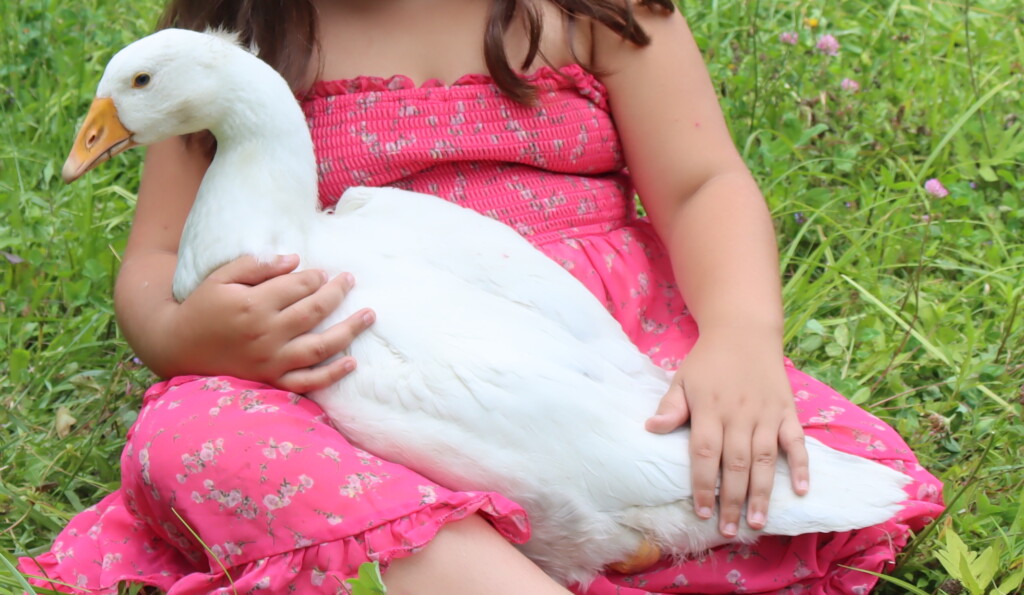
Caring for Geese (10 Weeks and Beyond)
By the time your geese reach 10 weeks of age, they’re well on their way to adulthood. Most breeds are fully feathered by this point, nearly adult-sized, and ready to thrive outdoors full time.
While the most intensive care stage is behind you, ongoing attention to their environment, nutrition, and seasonal needs will keep your geese healthy, happy, and productive for years to come.
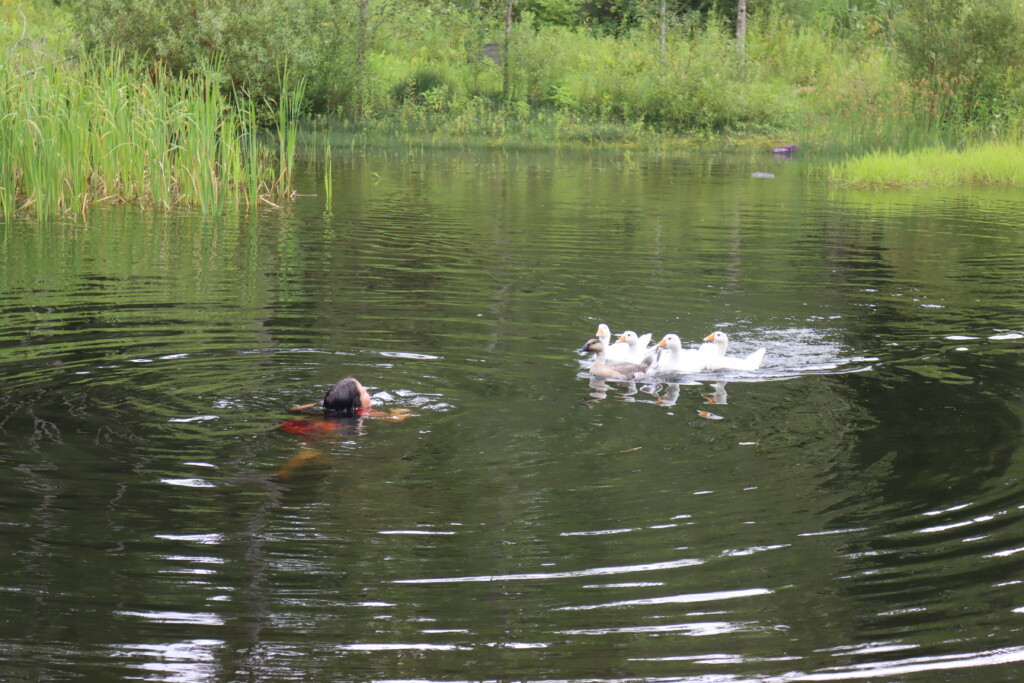
Housing and Shelter
Geese don’t require elaborate housing, but they do need dry, draft-free shelter where they can rest at night and get out of harsh weather. A simple three-sided shed or low-roofed poultry shelter with clean straw or shavings works well. Make sure the structure is well-ventilated but protected from wind, snow, and driving rain.
For adults, plan on at least 4–6 square feet per goose indoors and as much outdoor space as you can manage. Geese kept in smaller yards or pens will need more frequent cleaning, as they can be messy when confined.
If they’re on pasture, a low-effort shelter that they can enter freely works fine—geese will often put themselves to bed at dusk if they have a consistent routine.
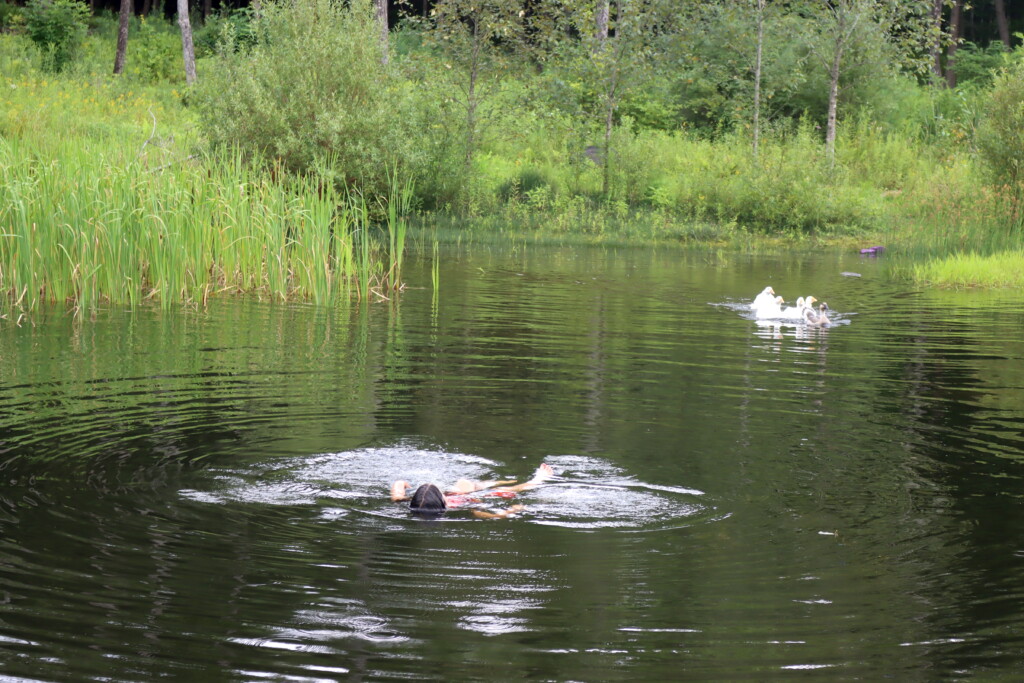
Feeding Adult Geese
Once they’re feathered out, adult geese do very well on pasture and foraging during the growing season. They’re among the most efficient grazing animals per pound of body weight and can meet most of their nutritional needs on grass, clover, and broadleaf weeds.
That said, you’ll still need to supplement with pellets or whole grains, especially during winter, breeding season, or if your pasture is sparse. A basic 16% protein all-flock pellet or waterfowl maintenance feed works well. Most adult geese eat 1/2 to 1 pound of feed per day depending on forage availability and breed size.
Always provide clean, fresh water in open containers deep enough for them to fully dunk their heads. This keeps their eyes and nostrils clean and helps with digestion.
You can also offer garden scraps, cut greens, and even small amounts of soaked grains—but avoid moldy feed, iceberg lettuce (which has little nutrition), and toxic plants like rhubarb leaves or nightshades.
They’re completely willing to help you weed the garden too!
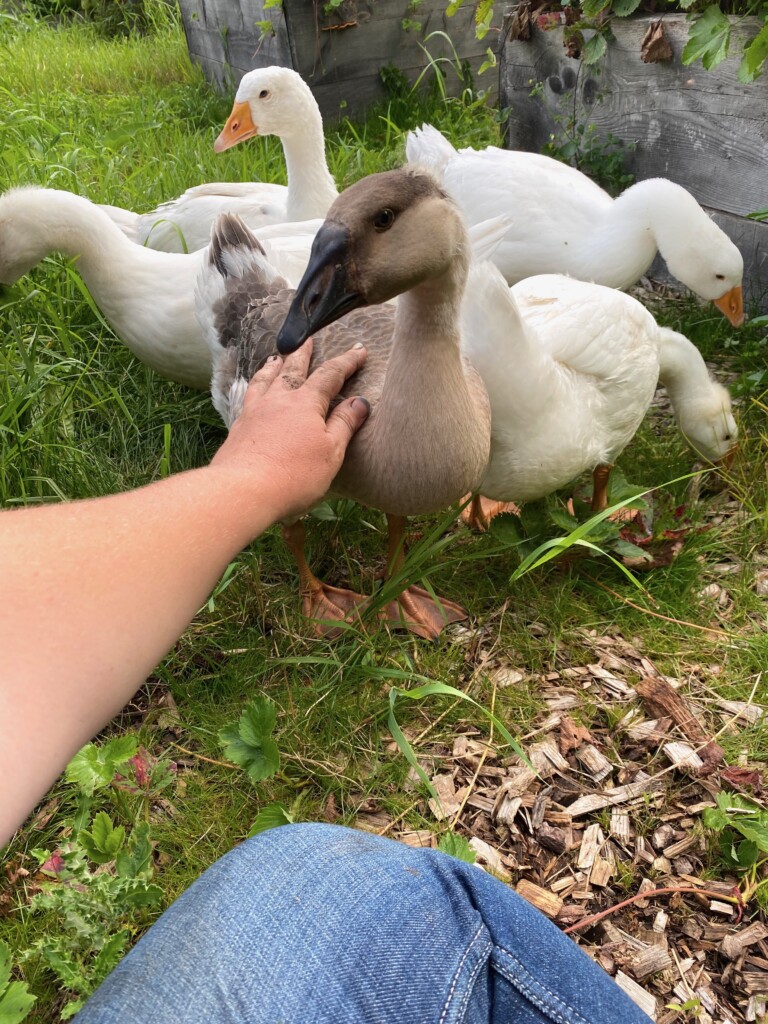
Seasonal Needs and Molting
Geese go through a full molt once per year, usually in late summer or early fall. During this time, they lose many of their feathers at once and may look ragged or patchy. It’s completely normal and nothing to worry about, though you may notice a drop in activity and appetite for a couple of weeks.
Avoid handling them excessively during molt—pin feathers can be sensitive—and keep their shelter extra clean to reduce the risk of skin irritation. Additional protein (such as legumes or higher-protein feed) can help support feather regrowth.
In colder regions, geese handle winter very well, but make sure their shelter stays dry and draft-free. Offer extra bedding, and ensure they have unfrozen water available during the day. In very hot climates, geese may struggle—offer shade, plenty of water for bathing, and avoid high-protein feed that generates extra body heat.
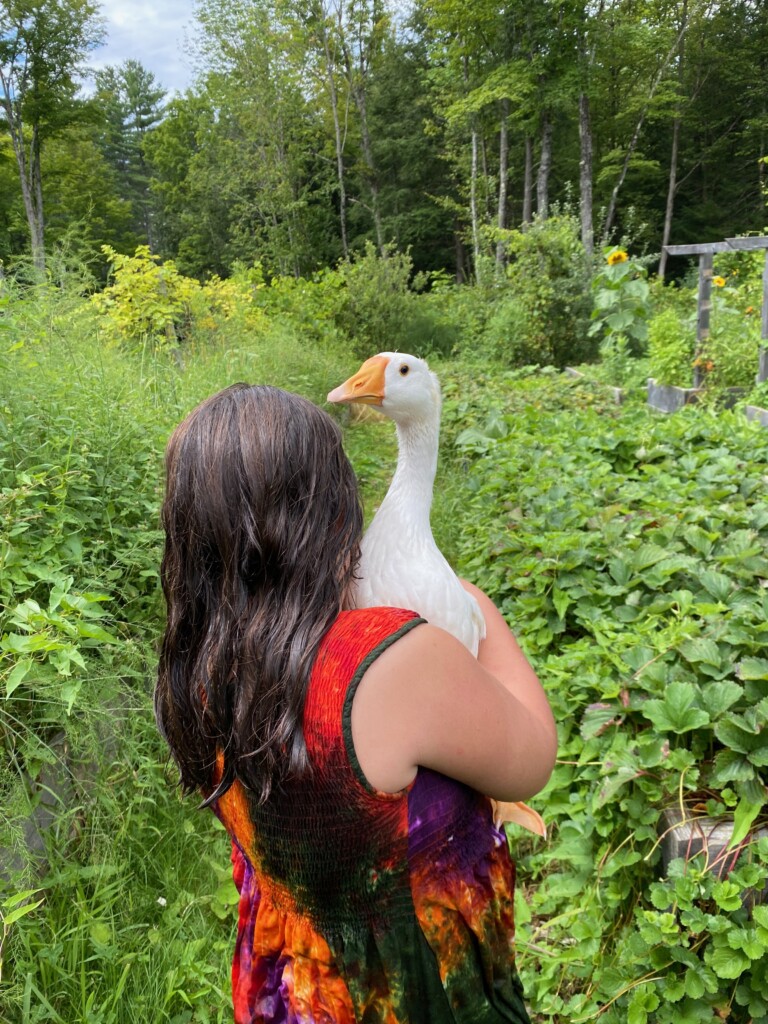
Behavior and Flock Dynamics
Adult geese are highly social, and most breeds do best in pairs or small groups. A single goose kept alone may become stressed or overly bonded to people, which can cause behavioral issues. Aim for at least two geese—and ideally more—to allow them to form natural bonds and reduce stress.
Geese are seasonally territorial, especially during the spring breeding period. Ganders may become more defensive of their mates or nest sites, but aggression is typically limited to posturing, hissing, or light chasing. Give them space, approach calmly, and avoid direct confrontation during this time.
With consistent handling and boundaries, even breeding-season geese remain manageable. Outside of spring, most geese are docile, curious, and content to spend their days foraging, preening, or quietly resting in the sun.
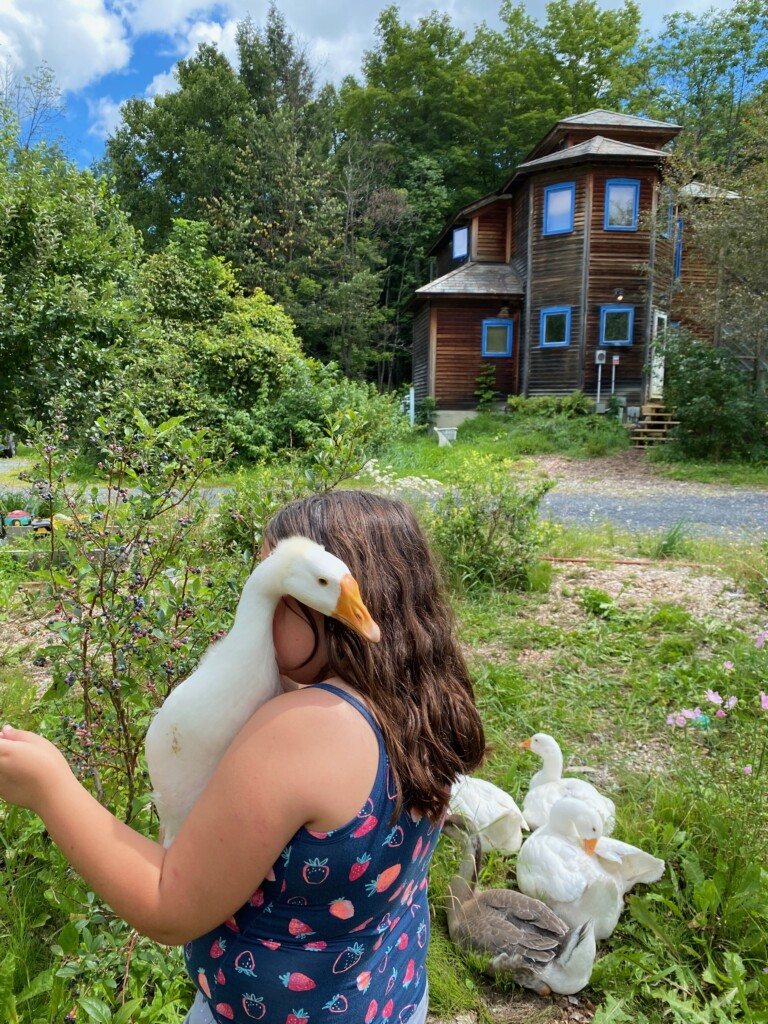
Predator Protection
Despite their size and fierce honk, geese are still vulnerable to predators. Raccoons, foxes, coyotes, dogs, and even large birds of prey can take down geese, especially at night or when young.
The best way to protect your flock is to lock them in a secure shelter at night and use fencing during the day if they aren’t being supervised. Electric poultry netting is an excellent mobile option for daytime protection, and a well-trained livestock guardian dog can help deter four-legged threats.
Avoid leaving goslings or young juveniles unattended outside, especially if you’re in an area with hawks or owls. Secure the perimeter, especially around nest sites during spring, as broody hens will stay on the ground for long periods.
Predator protection is obviously especially important when they’re quite small, as they can fall prey to cats and neighborhood pets as goslings.
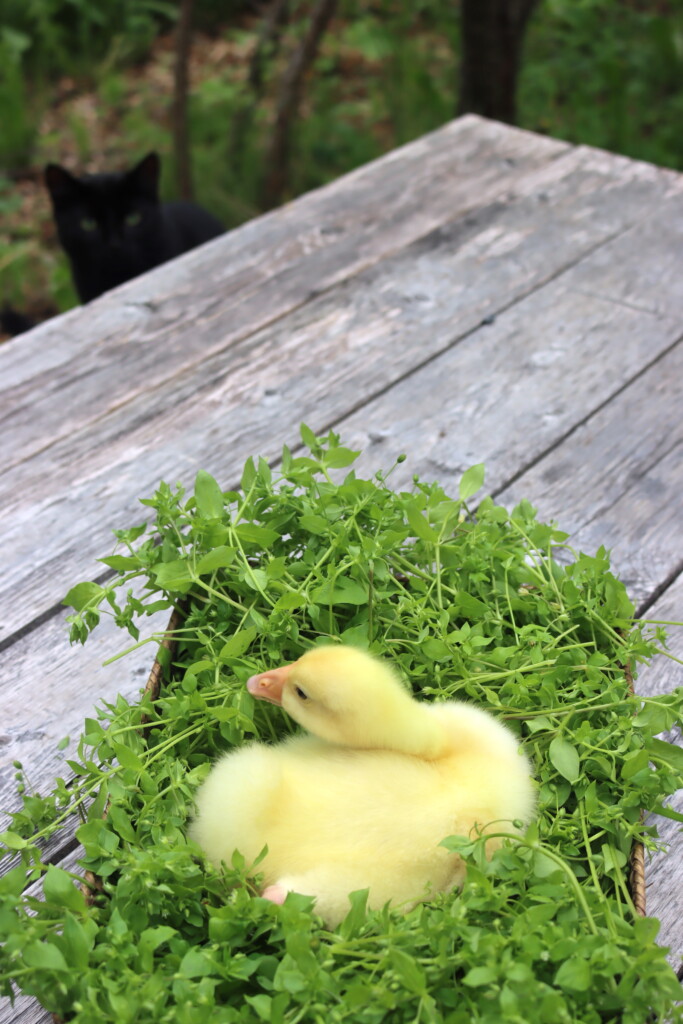
Health and Maintenance
Geese are remarkably hardy, but they still benefit from regular observation and basic care:
- Trim overgrown toenails or wings if necessary, especially in confined setups
- Check feet regularly for signs of bumblefoot (swelling or limping on hard surfaces)
- Watch for lice or mites in dirty bedding or around nesting sites
- Keep an eye on weight—geese can become overweight on too much grain or too little exercise
You don’t need to worm geese routinely unless you have known parasite issues, but rotational grazing and clean pastures go a long way in preventing problems.
Geese can live 15 to 20 years, but most remain productive (laying, breeding, and grazing) for the first 8–10 years with proper care.
Goose FAQ
Yes—surprisingly so! Once they’re out of the brooder stage, geese are some of the most self-sufficient and low-maintenance animals you can keep. With proper shelter, access to pasture, and clean water, they largely take care of themselves. They’re hardy, long-lived, and efficient grazers that often need less supplemental feed than chickens or ducks.
That said, their needs are different than other poultry. They require more space, fresh water deep enough to dunk their heads, and a bit more attention to predator protection and breeding-season behavior. But for most homesteads, geese are a very beginner-friendly animal—especially if you start with a calm breed.
For shelter, plan on 4–6 square feet per goose indoors. Outdoors, geese thrive with at least 20–25 square feet per bird, though the more room you can offer, the better—especially if they’re on pasture.
If you’re keeping geese in a mobile pen or rotating them through paddocks, give them fresh grass regularly and avoid overcrowding to prevent mud and mess. Free-ranging geese need little more than a secure shelter at night and plenty of room to roam during the day.
Nope! While geese love to swim and splash, they don’t need a pond to stay happy or healthy. A kiddie pool, livestock trough, or shallow tub of water is more than enough for daily bathing.
What they do need is access to clean water deep enough to dunk their heads—this helps them keep their eyes, nares, and bills clean and prevents infections. If you do have a pond, they’ll use it, but it’s not essential.
It depends on the breed. Chinese and African geese are known for being vocal, often sounding the alarm at anything unusual. Other breeds, like Pilgrim, Roman, and Toulouse, are much quieter and more content to honk only occasionally.
In general, geese are less noisy than roosters, but they will call out if startled, separated, or excited—especially during breeding season or when greeting their keepers. If you’re in an urban or suburban setting, choosing a quieter breed makes a big difference.
Yes, in many cases geese can share pasture or yard space with chickens and ducks. However, they do need separate feed, as waterfowl have different nutritional needs (especially more niacin). Also, make sure smaller birds can get away from pushy ganders during breeding season.
Avoid housing geese and chickens together in tight spaces, as geese can become territorial. Shared outdoor space is usually fine as long as everyone has room to move freely and separate at night.
Yes—female geese lay seasonally, usually in early spring. Depending on breed, age, and environment, most geese lay 20 to 50 eggs per year. Some heritage breeds like Pilgrim or American Buff may lay on the higher end, while ornamental breeds like Sebastopol lay fewer.
The best laying breed of goose is the Chinese, which will lay 90 to 100 eggs pear year.
Goose eggs are much larger than chicken eggs (often 5–6 ounces), with thick shells and rich, dense yolks. They’re excellent for baking and hatching, but geese are not year-round layers like chickens.
Some do, yes—especially breeds like Pilgrim, American Buff, and Sebastopol. Broodiness varies by individual, but many hens will make nests, set faithfully, and raise their own young with little interference.
Others may lay and abandon the nest, especially in their first year. If hatching goslings is your goal, watch for broody behavior and be prepared to use an incubator or foster goose if needed.
Domestic geese are long-lived birds. With good care, most breeds will live 15 to 20 years, and some can live even longer. Their most productive years (for egg laying or breeding) are usually between ages 2 and 10.
Even older geese who’ve stopped laying can be valuable for companionship, flock dynamics, and weed control.
Geese are natural grazers and get most of their nutrition from fresh grass and weeds during the growing season. In winter, or when pasture is limited, they need a balanced pellet feed or whole grains, supplemented with fresh greens.
Avoid feeding them moldy grains, processed foods, or anything toxic (like rhubarb leaves or nightshades). Always provide clean water, especially when offering dry feed.
To an extent—yes. Geese are naturally alert and territorial, and many breeds will sound the alarm if they sense danger. Some ganders will even chase off smaller predators or unfamiliar people.
That said, they’re not a replacement for secure fencing or nighttime shelter. Geese can deter hawks or alert you to an issue, but they’re still vulnerable to foxes, coyotes, and raccoons—especially at night.
Absolutely. Goose eggs are rich and flavorful, with a high yolk-to-white ratio. They’re excellent for baking and make impressive omelets and quiches. Most people find them slightly stronger in flavor than chicken eggs, but still delicious.
Goose meat is dark, rich, and more similar to duck or red meat than chicken. It’s prized for holiday roasts and traditional dishes, especially from breeds like Embden, Toulouse, and African.
At least two. Geese are highly social and do not do well alone. A mated pair or small flock of 3–6 geese is ideal for most backyards or homesteads.
If you’re not planning to breed, keep just females or a trio of one gander to two geese to avoid fighting or overbreeding.
Geese are a deeply rewarding addition to any backyard or homestead, offering both practical value and unmistakable personality. Give them a little room to roam, a safe place to sleep, access to fresh grass, and a tub of clean water, and they’ll thrive with surprisingly little effort—providing seasonal eggs, goslings, or simply their steady, engaging presence in return.
Whether you’re new to poultry or expanding your homestead flock, domestic geese are a fantastic addition that often get overlooked. Start small, learn as you go, and enjoy the unique rhythm they bring to the land.
